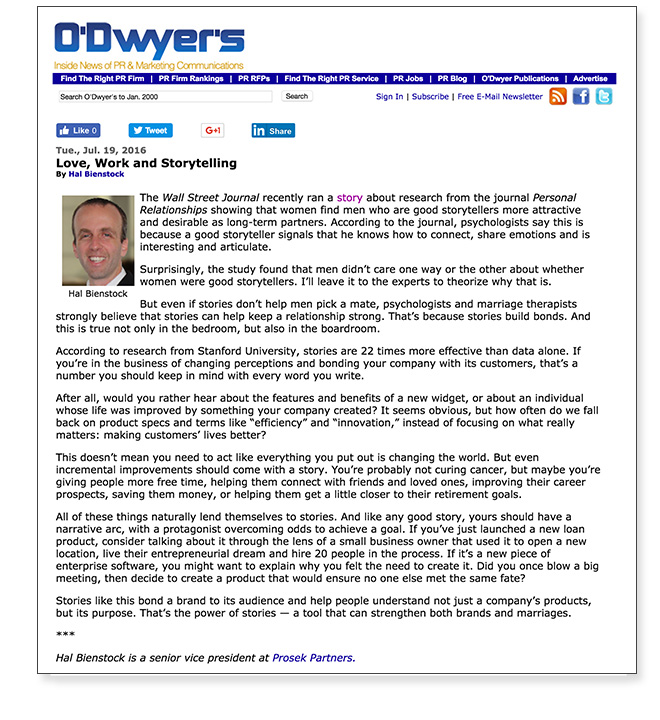|
Surprisingly, the study found that men didn’t care one way or the other about whether women were good storytellers. I’ll leave it to the experts to theorize why that is. But even if stories don’t help men pick a mate, psychologists and marriage therapists strongly believe that stories can help keep a relationship strong. That’s because stories build bonds. And this is true not only in the bedroom, but also in the boardroom. According to research from Stanford University, stories are 22 times more effective than data alone. If you’re in the business of changing perceptions and bonding your company with its customers, that’s a number you should keep in mind with every word you write. After all, would you rather hear about the features and benefits of a new widget, or about an individual whose life was improved by something your company created? It seems obvious, but how often do we fall back on product specs and terms like “efficiency” and “innovation,” instead of focusing on what really matters: making customers’ lives better? This doesn’t mean you need to act like everything you put out is changing the world. But even incremental improvements should come with a story. You’re probably not curing cancer, but maybe you’re giving people more free time, helping them connect with friends and loved ones, improving their career prospects, saving them money, or helping them get a little closer to their retirement goals. All of these things naturally lend themselves to stories. And like any good story, yours should have a narrative arc, with a protagonist overcoming odds to achieve a goal. If you’ve just launched a new loan product, consider talking about it through the lens of a small business owner that used it to open a new location, live their entrepreneurial dream and hire 20 people in the process. If it’s a new piece of enterprise software, you might want to explain why you felt the need to create it. Did you once blow a big meeting, then decide to create a product that would ensure no one else met the same fate? Stories like this bond a brand to its audience and help people understand not just a company’s products, but its purpose. That’s the power of stories — a tool that can strengthen both brands and marriages.
|

